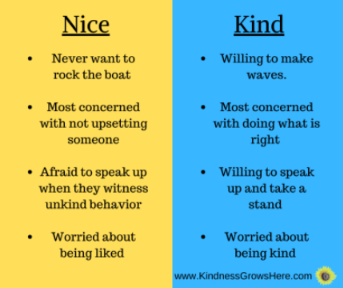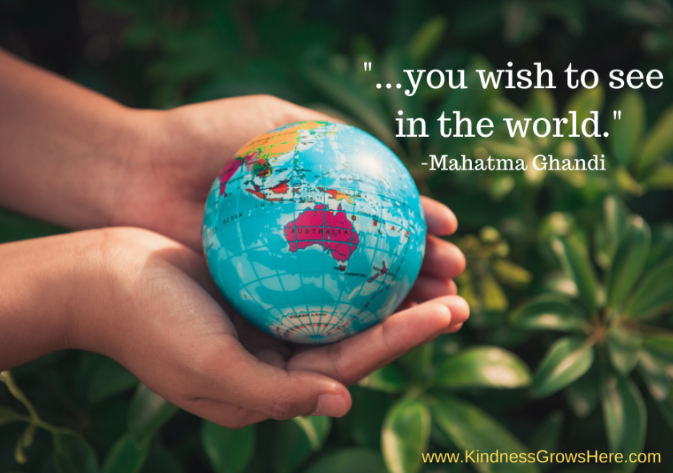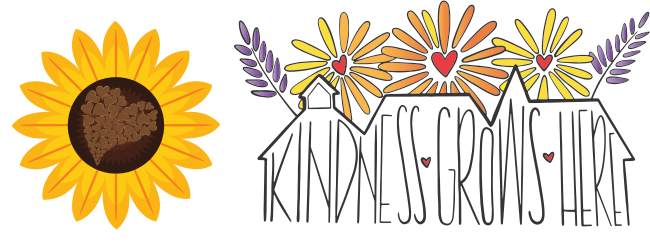Kindness doesn’t mean ignoring people when they do things that are unkind, wrong, ignorant, racist, or discriminatory. It doesn’t mean keeping quiet when you disagree with someone about a moral issue. But it does mean treating people with respect.
Sometimes the kindest, bravest thing we can do is stand up to someone who is being unkind. Doing so causes conflict. It will upset the person we are confronting. A nice person would see the potential for conflict and stay quiet. A nice person never wants to rock the boat. A kind person knows conflict is possible and acts anyway. A kind person knows they might create waves, and they are OK with that.
Imagine you are on the Metro. You see a group of teenagers picking on another teenager whose clothes are tattered and worn. They kick at his beat-up sneakers. They attempt to humiliate him for his appearance. What do you do?
A nice person sees this happening and keeps quiet. A nice person may notice that the victim is getting off at their same stop and walks up to the victim as the doors close, with the laughter of the bullying crowd left behind. The nice person says, “I am so sorry that happened to you. They shouldn’t have done that.”
In contrast, the kind person sees this happening and gets out of their seat. The kind person goes and sits next to the victim. The kind person looks directly at the group of teenagers and says, “What you are doing is not ok. It’s called harassment. Keep it up and I’ll call the police.”
In both instances, the victim is supported. But in only one instance are those being unkind told that their behavior will not be tolerated. In only one instance are the bystanders—those who witness the bullying behavior, and the actions of the person who stepped in—made to think about their own actions and what they might do the next time they witness such behavior. In only one instance is there the possibility that the bullies will think twice before acting in that way again. Being kind in this way isn’t easy.
But, sometimes kindness is really easy. It’s sharing an unexpected compliment with someone. It’s taking the time to remember someone’s name and then using it the next time you see them. It’s saying, “Thank you,” “I appreciate you,” “You are valued!” or “Are you OK?” It’s letting people know that they are noticed, valued, and important. It’s going a little bit (or a lot) out of your way to make someone’s day better. Kindness is caring. It is love. It is understanding.
Whether it is easy or hard, kindness is something we can (and should) do every day. It is what we should value above all else as we raise our children. Kindness should be one of the highest standards by which we measure our leaders, our teachers, our politicians, our police officers…anyone!
As adults, we must set the example for younger generations. We must show them by our actions, our words, and our choices, what it means to be kind. For it is only by watching good examples that children will learn what kindness really looks like. Whether you are a parent or not, children are watching you. They are watching how you interact with others. They are watching to see what you do when you witness something unkind. They are looking to you to set the tone. They want to see who you really are.
Kindness is that little voice in your head saying, “That’s not right! You should do/say something!” when you witness unkindness, discrimination, bias, or ignorance. A kind person listens to that voice and finds the words to step in and stand up. Is that who you really are? If it is, in standing up, we must keep in mind Mahatma Ghandi, when he said, “Be the change you wish to see in the world.”






